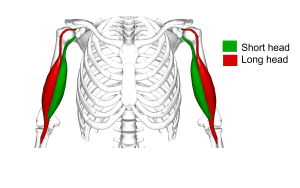2 Relevance of Anatomical Variation in Professional Contexts
Learning Objectives
- Recognise the impact of anatomical variation on patient outcomes, and its relevance to professional contexts.
Understanding the concepts of anatomical variation, and being able to recognise and describe anatomical variants, is important across all health professions. From doctors to physiotherapists, to surgeons and exercise scientists, having a profound knowledge of possible anatomical phenotypes that may present in a patient, and understanding the patient’s individual anatomy, is pivotal to the delivery of individualised patient care. Accuracy in the understanding of anatomical variation concept informs clinical practice in a variety of scenarios including predisposition to illness, symptomatology, preoperative planning, clinical examination and treatment planning and they also contribute to an accurate understanding of the embryological processes of development. Importantly, health professionals need to also be aware of the many factors that may influence the likelihood of different anatomical phenotypes presenting. Geographical location and population, as an example, significantly influences the incidence of different anatomical phenotypes.
To explore how anatomical variation is relevant to a variety of different health professionals – we can use the example of the morphology of the biceps brachii.

The biceps brachii is typically described as having two heads; a long and a short head. However, variation in the number of heads is possible – with the presence of 3-7 heads described within the literature. The presence of three heads is highly varied between different populations: Nepalese population 6.2% (Poudel et al., 2009); South African population 20.5% (Asvat et al., 1993); and Indian population 7% (Rai et al., 2007).
Figure 2.1. Typically described two heads of the biceps brachii; one long and one short head.
Recognising the phenotype of the biceps brachii in a patient is important in many clinical circumstances. For example, having more than two heads of the biceps brachii can increase the likelihood of compression of the neurovascular structures within the arm, such as the brachial artery or median nerve, which may result in pain. Health professionals who may diagnose and treat this pain, such as general practitioners or physiotherapists, therefore need to have a thorough understanding of anatomical variation to ensure accuracy in treatment and diagnosis. Similarly an exercise scientist may need to recognise this variant and the relationship it may have to strength and mobility during physical activity. And finally, as a surgeon, recognising the morphology of the biceps brachii is relevant during any form of shoulder surgery to minimise the likelihood of surgical complications.
Explore the following examples of how anatomical variation relates to different professional contexts:
A lack of understanding of anatomical variation as a health professional can lead to a number of negative clinical outcomes, including surgical errors, misdiagnosis and misinterpretation of medical images. In 2002, it was reported that 32% of medico-legal claims from general or vascular surgical errors, were a result of ‘damage to underlying structures’ with authors suggesting that an inadequate depth of anatomical knowledge, including of anatomical variation, is likely to blame (Ellis et al., 2002).
Activity
Create a short audio recording reflecting on how anatomical variation is relevant to you in your future health profession.
Your teaching team may ask you to share this recording with them or with a small group to initiate a discussion on the importance of anatomical variation in all professional contexts.
References and further reading
Asvat, R., Candler, P., & Sarmiento, E. E. (1993). High incidence of the third head of biceps brachii in South African populations. Journal of Anatomy, 182(1), 101–104.
Ellis, H. (2002). Medico-legal litigation and its links with surgical anatomy. Surgery (Oxford), 20(8), i-ii.
Poudel, P. P., & Bhattarai, C. (2009). Study on the supernumerary heads of biceps brachii muscle in Nepalese. Nepal Med Coll J, 11(2), 96-98.
Rai, R., Ranade, A. V., Prabhu, L. V., Pai, M. M., & Prakash, P. (2007). Third head of biceps brachii in an Indian population. Singapore Medical Journal, 48(10), 929–931.

